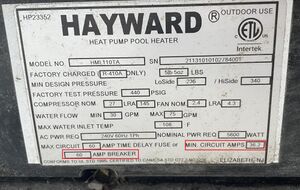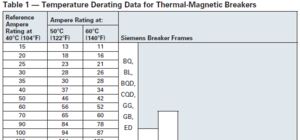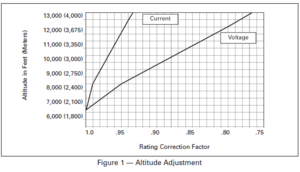Ground-Fault Circuit Interrupters (GFCI)
The Ground Fault Circuit Interrupter continuously monitors the the difference in current between the hot and neutral conductors. If the electricity going to a circuit is equal to the current back from the circuit the GFCI is dormant. If the electricity going to a circuit is greater than 5ma then the current coming back, the GFCI will open the circuit and stop the flow of electricity.
The purpose of the GFCI is to prevent severe electrical shocks. Ground faults occur when the electrical current in an circuit strays outside its normal path, and the human body becomes part of the path through which the electrical current may flow.
IAEI Magazine - GFCIs and Swimming Pools – A Natural Fit
IAEI Magazine - GFCI and AFCI Basics
National Electrical Code Requirements
The National Electrical Code covers pool requirements in Section 680. The NEC is revised every 3 years and pool requirements have evolved. Below lists the current code requirements:
- Pool motors require GFCI protection whenever they’re rated 120V, 208V, 240V, 15A or 20A (added in 2008)
- All electrical outlets must be at least 6 feet from the inside of the wall and must be GFCI protected. (changed in 2017)
- GFCI protection is required for ALL 15-amp, 20-amp, 125V, or single phase electrical outlets installed within 20 feet from a pool
- GFCI protection is required for ALL receptacles that supply power to the pool equipment, such as water heaters and pump motors.
- GFCI Protection is required for ALL underwater lighting operating over the low-voltage contact limit
- GFCI Protection is required for ALL light switches
- AFCI’s should only be used in instances where arcing in a confined space could happen. This is why electrical code in many jurisdictions now requires that they be installed on all bedroom circuits. AFCI’s should not be used on circuits with high inductive loads like motors.
Heater GFCI Requirements
Gas fired heaters require a GFCI. See NEC 680.28.
Heat pumps do not require a GFCI. Heat pumps fall under NEC 680.45 as a "circulation heater" which requires a GFCI when supplied by a branch circuit of 150 volts or less. Any pool Heat Pump that runs on 240 volts then does not require a GFCI.
Note that while a GFCI breaker is not required by the NEC for use with a heat pump some local codes may require it.
It is interesting to note that a Heat Pump is a refrigeration system that has a stated minimum circuit ampacity (MCA) and maximum overcurrent circuit protector (MOCP) on its data plate.[1] When you have that the NEC specifications for wire between the circuit breaker and the Heat Pump can be sized for the MCA instead of for the MOCP (circuit breaker). For more on this gift by equipment manufacturers on the equipment data tags see What Most Techs Get Wrong About Wire Sizing - When a 10-gauge wire on a 50-amp breaker is OK.
Personal Protection GFCI Breakers Are Required
The GFCI breakers called "personnel protection" are the ones required by code. "Personnel" protection breakers should not trip at less than 4 milliamps and should trip at 6 milliamps or higher.[2]
"Equipment protection" GFCI circuit breakers that trip at 30 milliamps should not be used around pools or spas.
GFCI Circuit Breakers
How it Works
The circuit breaker gfci works similarly to a clamp ammeter. For example, if you had L1, L2 and Neutral and you put a 240 volt, 10 amp load on the system, L1 and L2 would each carry 10 amps.[3]
If you measure L1 or L2, you should read 10 amps on each leg. However, if you clamp over both lines at the same time, the current would read zero because the current's magnetic field in the forward direction cancels the current's magnetic field in the reverse direction.[4]
If you then added a 120 volt, 5 amp load, you would measure 15 amps on one hot leg, 10 amps on the other hot leg and 5 amps on the neutral.
A clamp ammeter around any 2 or 3 wires will measure the net difference between current in both directions.
Putting the meter around all 3 wires should cancel and read zero amps.
As long as the neutral goes through the breaker, the total current in both directions should cancel.
So, a breaker doesn't really measure current and compare to make sure that the current is the same. It works on a cancelling effect.
As long as the current in both directions cancels, the breaker won't trip.
GFCI 20A CB for VS Pumps
Harmonics from the variable frequency drive can cause false GFCI trips. Pentair PA220GF is a 20A 240V GFCI breaker that GFCI trips at 6ma. The PA220GF is supposed to be less sensitive to false GCFI trips from VS pumps.
The PA220GF is a relabeled Siemens CB (QF220AP). Siemens added additional shielding to help resist false trips. Some say Pentair may have additional quality control and selects breakers less susceptible to false GFCI trips.
GFCI Testing
The The National Electrical Safety Foundations (NESF) and vendors suggest homeowners test their ground fault circuit interrupters (GFCI) every month - especially during thunderstorm season.
Each GFCI circuit breaker or receptacle has a built-in test button to test the device. It is very important to test each and every GFCI in your home once a month. To test a GFCI circuit breaker, make sure the breaker handle is in the "ON" position. Depress the "TEST" button. This will cause the handle to move to an intermediate "tripped" position indicating that the GFCI is functioning properly. Reset your circuit breaker by pushing the handle to the "OFF" position first, then "ON." If the circuit breaker fails to trip, it must be replaced.
GFCI Trips
- A Class A GFCI trips when the current to ground has a value in the range of 4mA to 6 mA (reference UL 943).
- GFCI breakers are doing their job when they trip when sensing a small imbalance. This type of small current imbalance is less then what would trip a regular circuit breaker.
- Moisture from rain or sprinklers can cause a GFCI to trip
- Some breakers are less sensitive to electrical noise from transformers, variable speed pumps, and lighting controls. Siemens breakers are recommended by some pool equipment manufacturers to be the least sensitive to false GFCI trips.
- Keep your pump dry and not sitting in a puddle or area of excess runoff to prevent GFCI trips.
6mA versus 30mA Operating Thresholds
In the USA, the operating threshold for a GFCI for personal shock protection is 6mA. In most of the rest of the world, the threshold is 30mA. There are two reasons for this difference. The first relates to safety, and the second relates to technology.
Tests on the human body have indicated that as the current is increased from zero mA, muscles tend to seize at about the 10mA level with the result that a person touching a live conductor may not be able to let go a live conductor at currents above 10mA. This is referred to as the “let-go” limit, and the North American GFCI standards decided to set the operating level of GFCIs at 6mA so as to have a comfortable safety margin below this threshold. At about 40mA, heart fibrillation starts to occur, which could lead to heart failure. European manufacturers decided to set 30mA as the operating level of RCDs (GFCIs) so as to have a comfortable safety margin below this threshold.
This begs the question as to why the Europeans would set a higher level than the let-go level. The answer is Technology. North America uses electronic technology in their GFCIs, and it is relatively easy to set an operating threshold of 6mA for such devices. However, most European devices use electromechanical technology, and it is extremely difficult for such devices to operate at the 6mA level, so they chose 30mA because they can detect this level quite easily and it provides protection against heart fibrillation. European manufacturers had a substantially greater influence on IEC standards and practice, and the 30mA level has been adopted in most areas worldwide with the exception of North America.
GFCI Nuisance Trips
Pentair has recognized the possibility of nuisance GFCI trips from the variable frequency drive of VS pumps and has recommended special circuit breakers.
Hayward Bulletin 092661 RevB describes why turning the light(s) OFF or ON/OFF 12V ColorLogic lights either via light switch or relay causes a GFCI breaker to trip, even on an unrelated circuit.
Hayward says the inductive kick of an isolation transformer causes a brief arc across the switch contacts which injects arc noise into the supply wiring. This brief noise feeds back to the panel and to all the installed breakers. The circuitry inside the GFCI breaker may react to the arc noise and trip, even though there is no ground fault current present.
GFCI Nuisance Trips from VS Pumps
Harmonics from the variable frequency drive pumps can cause false GFCI trips. Pentair PA220GF is a 20A 240V GFCI breaker that GFCI trips at 6ma. The PA220GF is supposed to be less sensitive to false GCFI trips from VS pumps.
The PA220GF is a relabeled Siemens CB (QF220AP). Siemens added additional shielding to help resist false trips. Some say Pentair may have additional quality control and selects breakers less susceptible to false GFCI trips.
GFCI Nuisance Trips from Hayward ColorLogic 12v Lights
As of 2017, all Hayward transformers have a Snubber in the box. This is a reason to use Hayward transformers with their 12V lights.
If other transformers are used, Hayward recommends a snubber always be installed on all ColorLogic 12v lighting applications, regardless of the controller and/or existence of GFCI circuits.
Intermatic PX50, PX100 and PX300 models now include a noise filter capacitor.
A snubber is a plastic-film, high-voltage capacitor that will suppress or “snub” the voltage spikes in electrical systems, such as the inductive kick from a transformer attached to a switch. Without arc suppression, these inductive spikes, though not harmful to users, increase the likelihood of nuisance trips in GFCI circuits and can also result in hiccups during Smart Relay light toggling on VS Omni applications.
The Snubber filters the high-frequency noise that could otherwise throw the controller and lighting out of sync. It will also keep the ColorLogic Lights from falling out of sequence with each other.
Hayward has the GLX-HAL-XSNUB snubber capacitor (arc suppressor) to add to non-Hayward transformers across the transformer's primary leads (line to neutral) on the load side of the light switch or relay.
High Ambient Temperatures
Air temperatures in some areas can exceed the 40C rating of Siemens Circuit Breakers. If the CB is installed in an outdoor panel it can be subject to temperatures above 40C (104F).
At 122F you have an 18A CB. An 18A breaker should not have more then a 14A load on it. Most VS pumps + SWG should not have an amp rating of more then 14 amps. So the 40C temperature CB rating should not be a problem.
Siemens says:[5]
Thermal-magnetic trip breakers are temperature sensitive and calibrated for a specific ambient of 40° C (104° F) (average enclosure temperature), a higher ambient will cause the breaker to trip at lower current than its nameplate rating, in other words, causing the breaker to “derate” (see Table 1).
Similarly, the current carrying capacity of a circuit conductor is based upon a certain ambient temperature, a higher ambient will reduce its current carrying capacity, causing to “derate.” Thus, with a fluctuating temperature, a thermal-magnetic breaker will derate nearly parallel with its connected circuit conductors and maintain close circuit protection.
If the application temperature exceeds 40° C (104° F) and is known, either a breaker specially calibrated for the higher ambient or one oversized according to Table 1 may be selected. In a case such as this, the circuit conductors should be oversized as well.
Altitudes Greater Than 6600 ft. (2000 meters)
Siemens says:
Reduced air density at altitudes greater than 6600 ft. (2000 meters) affects the ability of a molded case circuit breaker to transfer heat and interrupt faults.
Therefore, circuit breakers applied at these altitudes should have interrupting, insulation and continuous currents derated as indicated in Figure 1.
Mixing of CB Manufacturers in Panels
Code Acceptance
Financially, it makes sense for manufacturers to specify their own breakers for use in their panel boards and not list competitors’ products; even though they too are suitable for use. This is why a third party organization (Underwriters Laboratories Inc.) is responsible for listing suitable replacements for the manufacturer’s specified circuit breakers. Our classified circuit breakers meet all code acceptance regulations governed by the National Electric Code® and Underwriters Laboratories Inc.[6]
Original Panelboard Warranty
Original panelboard manufacturers may claim that the use of breakers other than those specified voids their warranty. However, the Magnusson-Moss Warranty- Act prevents manufacturers from making warranties contingent upon the use of their replacement parts, as long as the third-party part is safe. Since the safety has been proven by UL, the panelboard manufacturer’s warranty is still effective when you choose a CL or CHQ breaker.
.
- ↑ https://www.troublefreepool.com/threads/hayward-heat-master-keeps-tripping-the-breaker.279125/post-2447582
- ↑ https://www.troublefreepool.com/threads/which-gfci-breaker-to-use.196188/post-1729889
- ↑ https://www.troublefreepool.com/threads/pool-panel-wiring-question.192467/post-1696232
- ↑ https://w3.usa.siemens.com/powerdistribution/us/en/product-portfolio/circuit-breakers/residential-circuit-breakers/gfci/Pages/gfci.aspx?tabcardname=wiring%20diagram
- ↑ https://contractor.compas.siemens-info.com/assets/speedfax/SF17_Sect07.pdf
- ↑ https://www.eaton.com/content/dam/eaton/products/low-voltage-power-distribution-controls-systems/circuit-breakers/classified-circuit-breakers/ul-classified-replacement-circuit-breakers-sa00304001e.pdf




